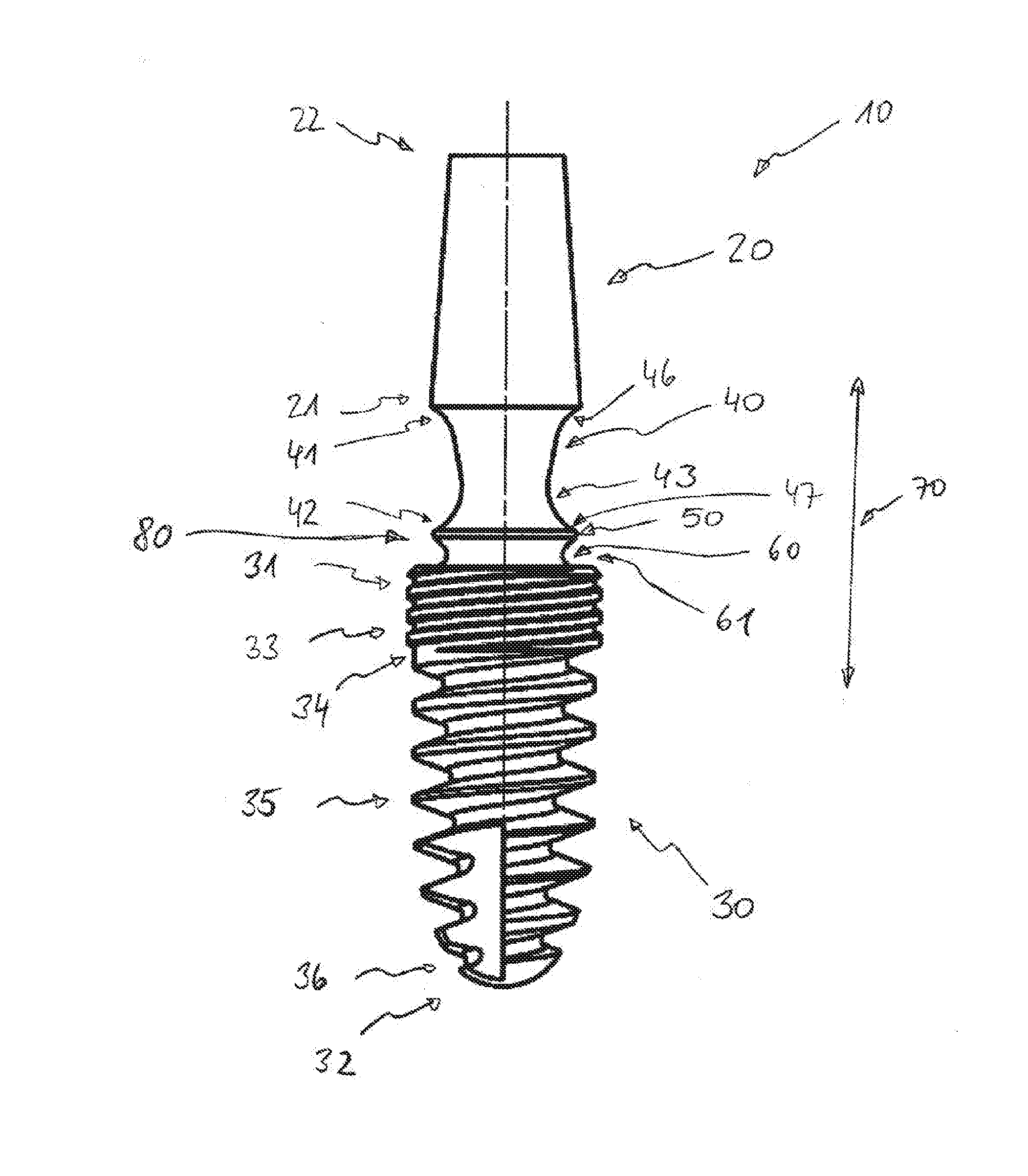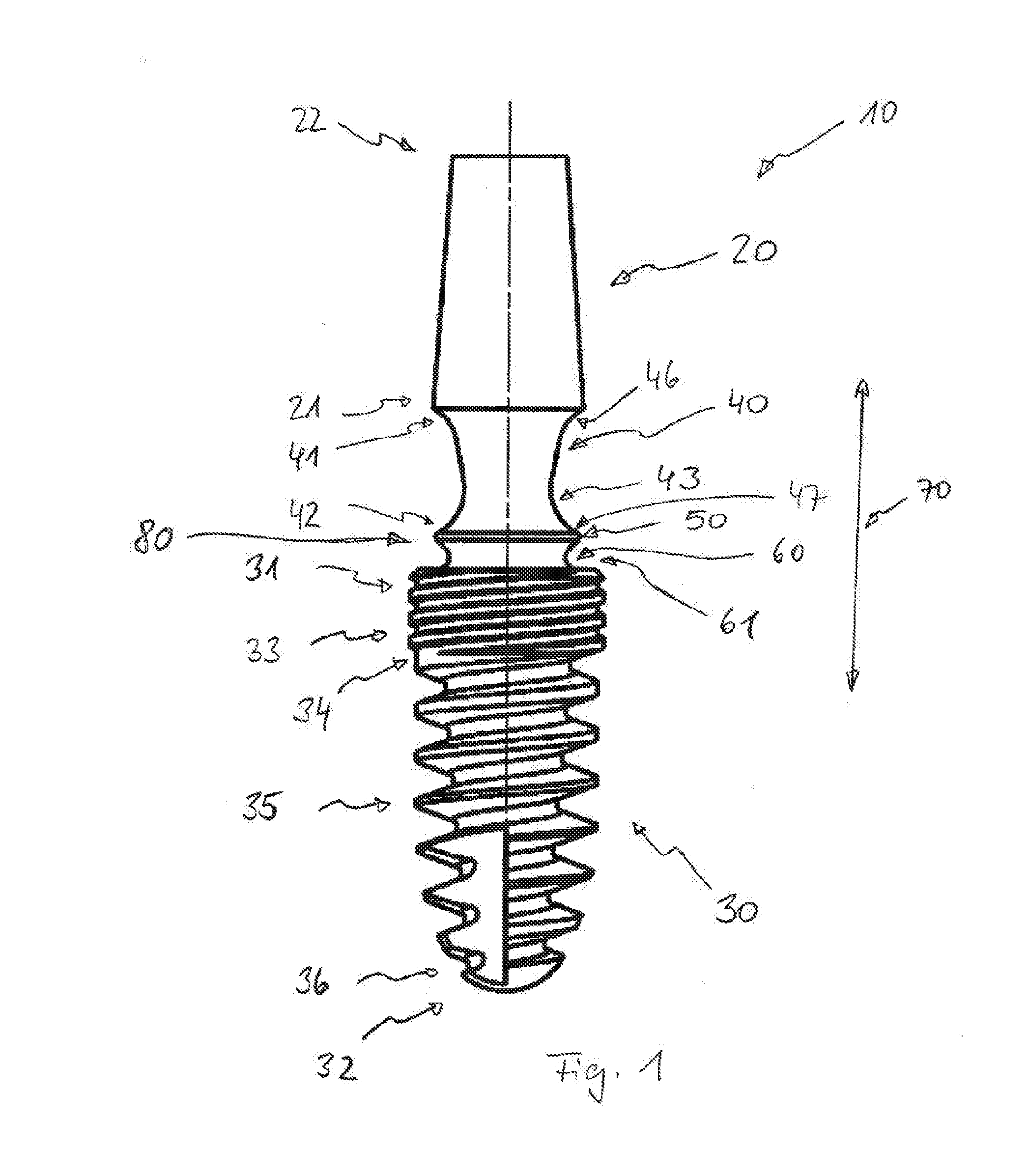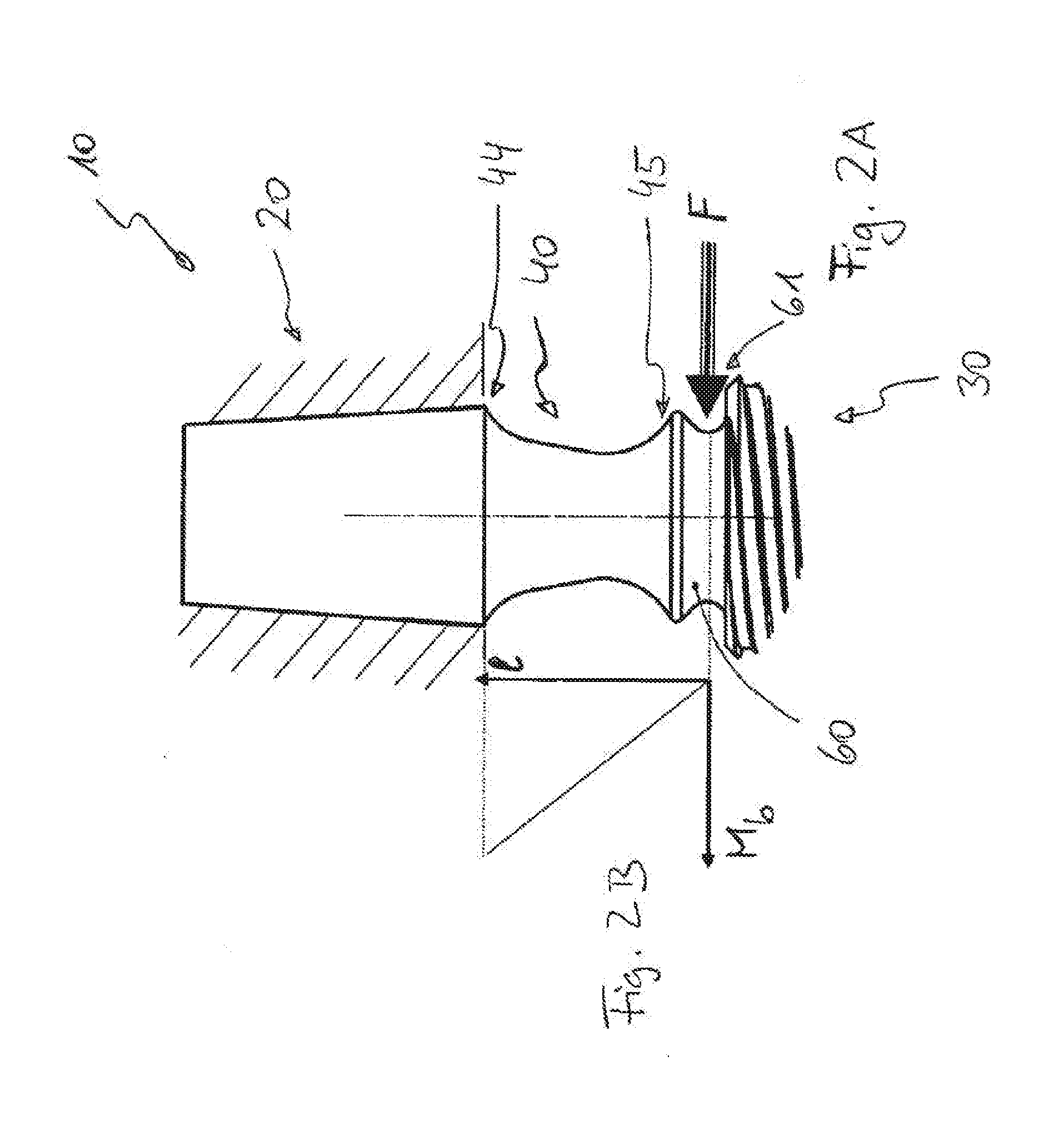One-part tooth implant, device for bending an implant, and method for bending an implant
a technology of abutment stud and a device, which is applied in the field of one-part tooth implant, can solve the problems of not being able to freely select the rotation position of the abutment stud not being able, or only being able, and achieving the effects of no damage to the bone bed, simple production, and reliable handling
- Summary
- Abstract
- Description
- Claims
- Application Information
AI Technical Summary
Benefits of technology
Problems solved by technology
Method used
Image
Examples
Embodiment Construction
[0195]In the following description, the same reference numerals are used for identical and identically acting parts.
[0196]FIG. 1 shows an embodiment of an implant 10 according to the invention having an abutment region 20, also referred to as an abutment, which is designed such that a dental-prosthesis construction (not shown) is fastenable thereon. In addition, the geometry of an artificial tooth root or an anchoring region 30 is shown. An end 31 of the anchoring region 30 facing toward the abutment region will be located, for example, at or (slightly) below a bone level 80 after the implantation. Furthermore a bending region 40, also referred to as a bending zone, is provided, a collar-shaped element 50, and a bearing region 60.
[0197]The abutment region 20 has an end 21 facing toward the anchoring region and a free end or coronal end 22. The anchoring region 30 has the end 31 facing toward the abutment region and a free end or enossal end 32.
[0198]The bending region 40 is arranged...
PUM
 Login to View More
Login to View More Abstract
Description
Claims
Application Information
 Login to View More
Login to View More - R&D
- Intellectual Property
- Life Sciences
- Materials
- Tech Scout
- Unparalleled Data Quality
- Higher Quality Content
- 60% Fewer Hallucinations
Browse by: Latest US Patents, China's latest patents, Technical Efficacy Thesaurus, Application Domain, Technology Topic, Popular Technical Reports.
© 2025 PatSnap. All rights reserved.Legal|Privacy policy|Modern Slavery Act Transparency Statement|Sitemap|About US| Contact US: help@patsnap.com



